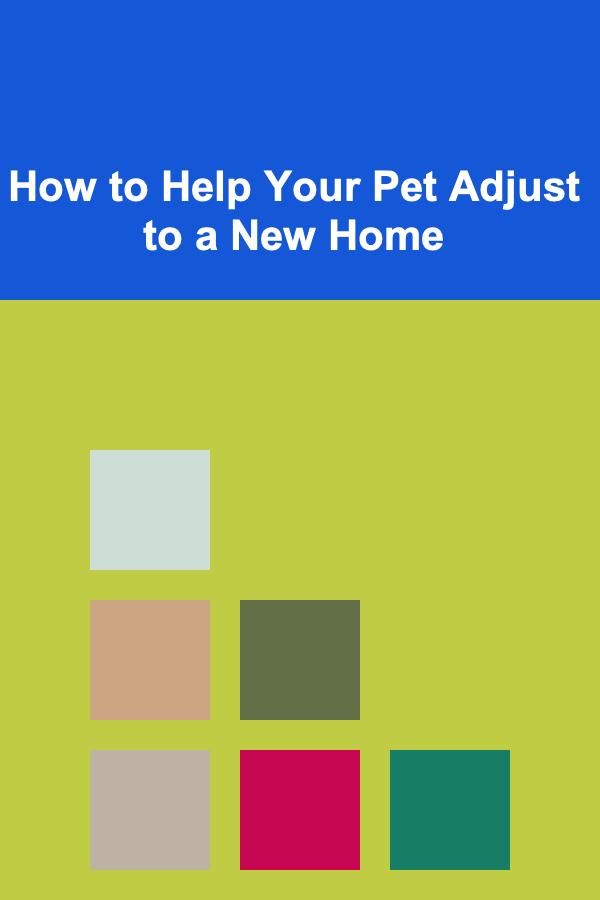
How to Select the Best Ammunition for Your Firearm at the Range
ebook include PDF & Audio bundle (Micro Guide)
$12.99$7.99
Limited Time Offer! Order within the next:

When it comes to shooting at the range, selecting the right ammunition is crucial to achieving both accuracy and reliability with your firearm. Whether you're a novice or an experienced shooter, understanding how to choose the best ammunition for your firearm can have a significant impact on your shooting performance, as well as your safety.
This article will explore the factors that affect ammunition selection, the different types of ammo available for a variety of firearms, and how to match your ammunition to your specific needs. By the end, you'll have a deeper understanding of how to make informed decisions about ammunition and how to use it effectively at the range.
Understanding Ammunition Basics
Before delving into how to choose the best ammunition for your firearm at the range, it's important to have a fundamental understanding of ammunition components and types.
Components of Ammunition
Every round of ammunition, regardless of its type or caliber, consists of the following components:
- Projectile: This is the bullet itself, which is the part that exits the barrel when the gun is fired. The type of projectile affects the performance of the round, including its accuracy, penetration, and terminal performance.
- Case: The case is the container that holds all the components together. It is typically made of brass, steel, or aluminum. The case contains the powder, primer, and projectile.
- Powder: The propellant inside the case that ignites when the primer is struck, creating gas pressure that forces the bullet out of the barrel. The type and amount of powder affect the velocity and pressure of the round.
- Primer: The primer is a small, sensitive cap at the base of the cartridge that, when struck by the firing pin, ignites the powder and initiates the firing sequence.
- Wad (for Shotgun Ammunition): Shotgun shells contain a wad that holds the shot in place until it exits the barrel.
These elements combine to produce the force necessary to propel the projectile down the barrel and toward the target. Understanding how each of these components works can give you insight into how different types of ammunition will perform.
Types of Ammunition
Ammunition comes in many different calibers and configurations. Some common types include:
- Full Metal Jacket (FMJ): FMJ rounds have a solid metal casing that fully encloses the lead bullet. They are the most common type of ammunition for range use because they are generally inexpensive and reliable. FMJ rounds are known for their consistent performance but are not as effective for self-defense because they tend to over-penetrate without expanding.
- Hollow Point (HP): These rounds are designed with a hollowed-out tip that expands upon impact, creating a larger wound channel. They are typically used for self-defense and hunting, but they are less common for target shooting at the range due to their higher cost.
- Ball Ammunition: Similar to FMJ, ball ammunition typically refers to standard military-style projectiles. These rounds are often used for training and range shooting.
- Shotgun Shells: Shotguns use shells containing either pellets or slugs. Pellets are small spherical projectiles that spread out upon firing, while slugs are single projectiles. Each type is used for different applications, with pellets being more common for shooting at moving targets and slugs being used for precision at longer ranges.
- Lead-Free Ammunition: Lead-free ammunition is designed for environmentally conscious shooters and is used where lead-based ammunition is banned or restricted. This type of ammo uses alternative materials for the projectile, such as copper or steel.
Factors to Consider When Selecting Ammunition
Now that you understand the basics of ammunition, it's time to explore the key factors that affect ammunition selection for the range. These factors will help you choose the right ammo for your firearm and shooting goals.
1. Caliber Compatibility
The first and most obvious consideration when selecting ammunition is ensuring that the round matches the caliber of your firearm. Caliber refers to the diameter of the bullet and, in some cases, the cartridge case. For example, a .22 LR bullet is designed to fit firearms chambered for .22 LR cartridges. Always double-check that the ammunition is the correct caliber for your firearm to avoid any safety hazards or misfires.
2. Purpose of Shooting
Your goal at the range will heavily influence your ammunition choice. The type of shooting you plan to do -- whether it's casual target shooting, competitive shooting, or practice for self-defense -- will determine which ammunition is best suited for your needs.
- Target Shooting: If your goal is simply to practice accuracy and improve your shooting skills, then low-cost, reliable ammunition like FMJ rounds or ball ammunition is the best choice. These rounds are ideal for putting rounds downrange without breaking the bank.
- Competitive Shooting: Competitive shooters often look for ammunition that offers high accuracy, consistency, and minimal recoil. In these cases, match-grade ammunition, which is manufactured to precise specifications, is typically preferred. Match-grade ammo is more expensive but offers better consistency in terms of velocity and accuracy.
- Self-Defense: For self-defense training, hollow point or other expanding ammunition is often recommended. These rounds expand upon impact, creating a larger wound channel and transferring more energy to the target. While these rounds are more expensive, they are designed to simulate real-world self-defense scenarios and offer better stopping power.
3. Recoil Considerations
Recoil is the backward movement of the firearm when it is fired. It can be a crucial factor for both comfort and accuracy, especially for new shooters. Some ammunition types are designed to produce less recoil, while others generate more.
- Reduced Recoil Ammunition: For shooters sensitive to recoil, especially beginners, reduced-recoil ammunition can be a good choice. These rounds are designed with less powder, leading to less force when the round is fired.
- Standard Ammunition: Standard FMJ ammunition tends to offer average recoil that most shooters are accustomed to.
- High-Recoil Ammunition: If you are training for personal defense or military-style shooting, you may need ammunition that produces more recoil. High-caliber rounds typically produce more recoil and may be used in specific situations, such as hunting or defense.
Recoil is an important consideration for accuracy, especially in rapid-fire situations or for shooters who may have less experience with firearms. Choose ammunition that allows you to control your shots and remain consistent in your performance.
4. Bullet Weight
The weight of the bullet can have a significant impact on both accuracy and velocity. Bullet weight is measured in grains, and different bullet weights are designed for various purposes.
- Lightweight Bullets: Lighter bullets tend to travel faster, which may be beneficial for long-range shooting or for minimizing the amount of time the projectile stays in the air. However, they may have a tendency to be less stable at longer distances and may not provide the same energy transfer upon impact.
- Heavier Bullets: Heavier bullets generally carry more energy and provide better performance at longer ranges. They tend to be more stable in flight and are better at retaining velocity, making them more suitable for precision shooting or larger game hunting.
The choice between lightweight and heavy bullets depends on the distance you plan to shoot, the firearm you're using, and your personal shooting style.
5. Cost and Availability
While the primary goal at the range is to practice, ammo prices can add up quickly. Understanding your budget and the availability of specific ammunition can help you select the best choice for your shooting session.
- Budget-Friendly Options: For regular practice and target shooting, inexpensive ammunition such as FMJ or ball ammo is the best option. It allows you to shoot more rounds for less money, helping you focus on developing your skills without worrying about the cost.
- Premium Ammunition: For competitive shooting or self-defense training, premium ammunition may be required. This includes match-grade ammunition or specialized defensive rounds like hollow points. Although more expensive, they are designed to perform better under specific conditions.
It's also worth considering the availability of ammunition in your area. Some types of ammo may be more difficult to find, especially in certain calibers or during times of high demand.
6. Environmental Considerations
Depending on where you are shooting, environmental factors may play a role in ammunition selection. For instance:
- Lead-Free Ammo: In some locations, especially in indoor shooting ranges or places with strict environmental regulations, lead-free ammunition may be required. This ensures a cleaner environment and helps prevent lead contamination.
- Weather Conditions: Weather conditions such as extreme heat or cold can impact ammunition performance. In cold weather, some ammunition types may experience slower velocities or inconsistent performance, so it's essential to choose ammo that is known for reliability in such conditions.
- Range Regulations: Many ranges have strict rules regarding the types of ammunition allowed, particularly in terms of projectile type (e.g., no steel-core or armor-piercing ammo). Be sure to familiarize yourself with the specific rules at your range before selecting your ammunition.
7. Match Ammo to Your Firearm
Finally, consider the specific needs of your firearm. Not all firearms perform equally well with all types of ammunition, so it's important to test different brands and styles of ammo in your weapon. Some guns may have a particular preference for certain bullet types, weights, or brands. For example, some semi-automatic pistols may experience malfunctions with certain hollow point rounds but function flawlessly with FMJ rounds.
Test different ammunition to see which type offers the best performance in terms of accuracy, reliability, and recoil management. This can help you maximize the effectiveness of your training at the range.
Conclusion
Selecting the right ammunition for your firearm at the range is a critical factor in improving your shooting experience and performance. By understanding the components of ammunition, considering the purpose of your shooting, evaluating factors like recoil, bullet weight, and cost, and matching the ammo to your firearm's needs, you can enhance your range time and achieve better results.
Whether you are a competitive shooter, a recreational enthusiast, or training for self-defense, understanding the nuances of ammunition selection will help you make informed decisions that optimize your shooting experience. Always remember to choose high-quality, reliable ammunition and practice regularly to hone your skills safely and efficiently.
Reading More From Our Other Websites
- [Personal Care Tips 101] How to Choose a Body Lotion for After-Sun Care
- [Personal Investment 101] How to Make Money Using Deep Learning
- [Organization Tip 101] How to Create a Backup Plan for Important Documents
- [Organization Tip 101] How to Implement Team Challenges for Friendly Competition
- [Home Lighting 101] How to Light Your Hallway for Safety and Style
- [Personal Care Tips 101] How to Choose Waterproof Mascara for Summer Days
- [Personal Investment 101] Monetizing Deep Learning: 5 Ways to Earn Passive Income
- [Simple Life Tip 101] Best Minimalist Morning Routines for a Calm Start to Your Simple Life
- [Personal Investment 101] How to Build and Sell Custom Deep Learning Solutions for Passive Income
- [Home Party Planning 101] How to Create a Sentimental Party Theme for Your Home Gathering

How to Create a Mindful Workspace for Productivity
Read More
How to Evaluate Your File Organization System Regularly
Read More
How to Help Your Pet Adjust to a New Home
Read More
How to Prevent Property Damage by Tenants
Read More
How to Safeguard Your Home Against Home Invasions
Read More
How to Store and Organize Kids' Toys in Small Living Spaces
Read MoreOther Products

How to Create a Mindful Workspace for Productivity
Read More
How to Evaluate Your File Organization System Regularly
Read More
How to Help Your Pet Adjust to a New Home
Read More
How to Prevent Property Damage by Tenants
Read More
How to Safeguard Your Home Against Home Invasions
Read More